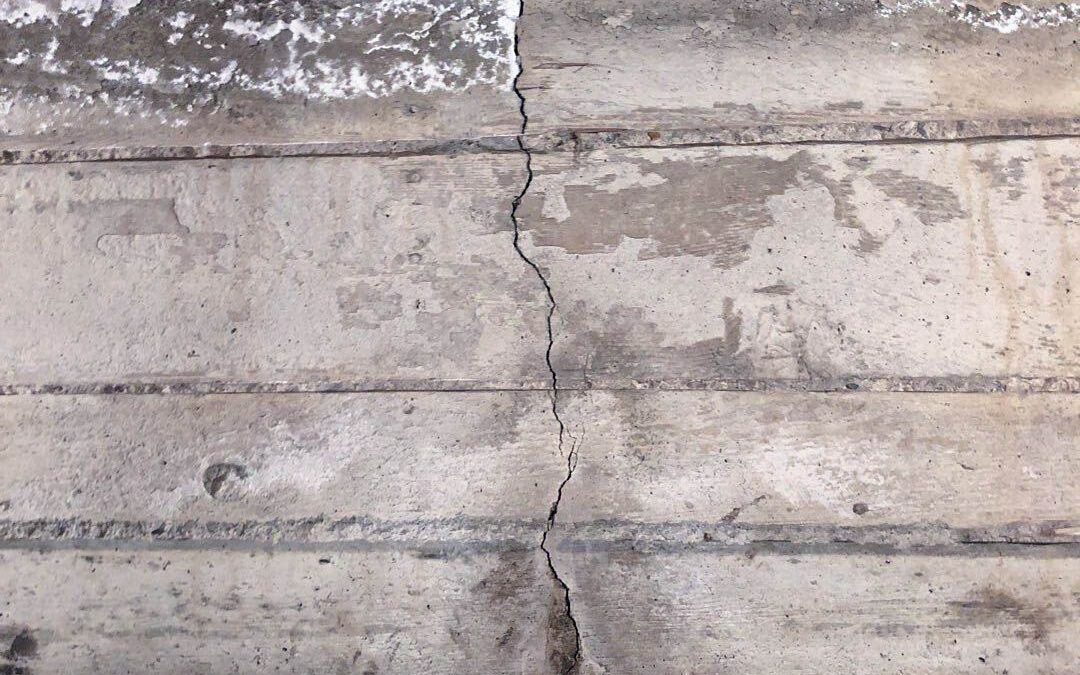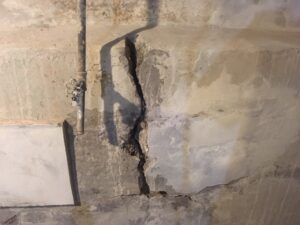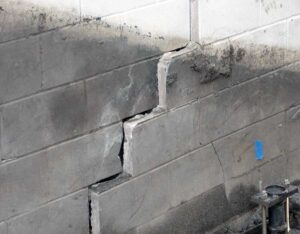Basement wall cracks can be a common and concerning issue for homeowners. These cracks can vary in size and severity and may seem harmless at first glance. However, ignoring them can lead to more significant structural problems, moisture issues, and even health concerns. In this article, we will explore the causes of basement wall cracks and provide guidance on how to repair them effectively.
Understanding the Causes
Hydrostatic Pressure: One of the primary reasons for basement wall cracks is hydrostatic pressure. This occurs when water accumulates around the foundation due to poor drainage or heavy rain. The pressure from the water against the walls can lead to cracks over time.
Shifting Soil: The natural settling and shifting of the soil beneath your home’s foundation can also cause cracks. This can happen as a result of changes in moisture content, temperature fluctuations, or the type of soil your home is built upon.
Poor Construction: In some cases, poor construction practices or materials can contribute to basement wall cracks. Inadequate reinforcement, improper curing of concrete, or the use of low-quality materials can all play a role in the formation of cracks.
Repairing Basement Wall Cracks
Identify the Type of Crack
Before attempting any repairs, it’s crucial to identify the type of crack you’re dealing with. There are two primary types of basement wall cracks:
1. Vertical Cracks: These cracks typically run straight up and down and are often caused by settling or minor shifts in the foundation. They are usually less severe and easier to repair.
2. Horizontal Cracks: Horizontal cracks are more serious and indicate significant pressure against the basement wall. These cracks may require professional assessment and repair.
Gather Your Materials
For small vertical cracks, you can often handle the repairs yourself. Here’s what you’ll need:
- Safety gear (gloves, safety goggles, and a dust mask)
- A wire brush or chisel
- Hydraulic cement or epoxy-based crack sealer
- A caulking gun
- A trowel
- Paint or sealant (optional)
- Prepare the Crack
- Begin by cleaning the crack thoroughly using a wire brush or chisel to remove any loose debris, dust, or old sealant. The crack should be clean and dry before proceeding.
- Apply the Sealant
For vertical cracks, you can use hydraulic cement or an epoxy-based crack sealer. Follow the manufacturer’s instructions for mixing and application. Typically, you’ll use a caulking gun to apply the sealant to the crack, making sure it fills the entire space. Smooth the surface with a trowel for a neat finish.
Allow for Drying and Curing
Give the sealant ample time to dry and cure, which may take a few hours to a few days depending on the product used and the environmental conditions. Follow the manufacturer’s recommended drying times.
Consider Waterproofing
To prevent future basement wall cracks, consider waterproofing your basement walls. This can involve applying a waterproof coating or membrane to the interior or exterior of the walls. Waterproofing helps to mitigate the risk of moisture seeping in and causing cracks.
Basement wall cracks should not be taken lightly, as they can lead to more significant issues if left unaddressed. Identifying the type and cause of the crack is essential for determining the appropriate repair method. While small vertical cracks can often be repaired by homeowners, horizontal or severe cracks should be evaluated by professionals. By taking prompt action and following the proper repair techniques, you can ensure the stability and longevity of your home’s foundation while maintaining a dry and safe basement.
Contact the Professionals at Premium Waterproofing Today! (630) 879-6116



